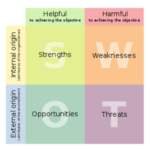Intention Layer Methods
Mapping conflicts with CLIPS

Conflicts, problems and tensions form a natural part of the life of a group project and we only have a few social tools to manage them in a positive way. This method is one among others; from the CLIPS framework. It proposes to listen, collect and order the information that the conflict is contributing to. Allowing to observe it from different layers, feelings, needs and fears, searching a way to new options.
The Traffic Light

Any group needs to set its boundaries in a transparent manner for members, both new and old, to be able to navigate more smoothly within the community. What is needed from each member? What can be made possible? What is expected? The Traffic Light exercise zones out these aspects to set clear boundaries.
Peer Coaching with CLIPS

The term 'Collegial Coaching' is widely used in social enterprises to target issues of importance to one person for which this person seeks advice from their peers. The method has been adapted in a way that while coaching, the CLIPS model. is brought in as a reference. It could be typically applied at the end of an introduction to the CLIPS-model,and can be used with any audience that is familiar with the CLIPS model.
CLIPS Onion

This method aims at supporting groups to develop a meta-perspective about their group from a CLIPS perspective. A typical example of the use of this method is the first day of a community meeting, dedicated to gain a deeper understanding of the issues of the community and at the same time understanding the importance of all 5 CLIPS layers.
The Dreaming Circle

The Dreaming Circle is part of "Dragon Dreaming Project Development". It is a powerful tool that serves to transform a project from being the project of the founder(s) to being the project of the whole group. It is used at the very beginning of a project cycle and yields a shared dream that can easily be used as the basis for formulating the vision, mission, and goals of a project.



